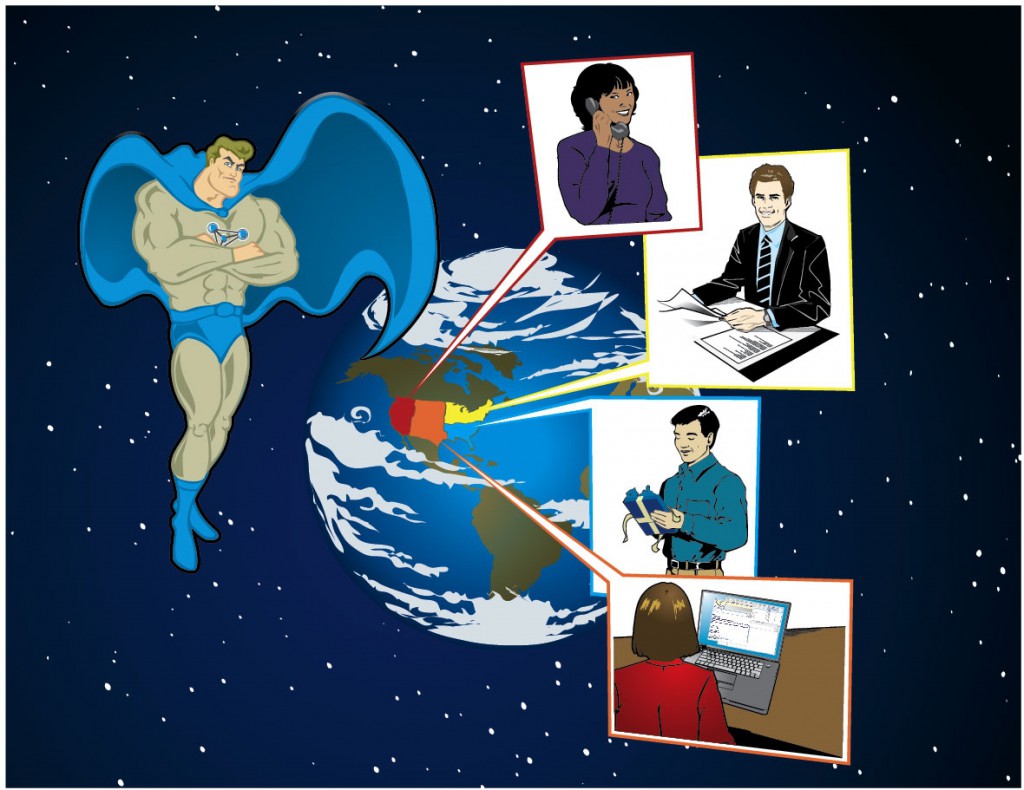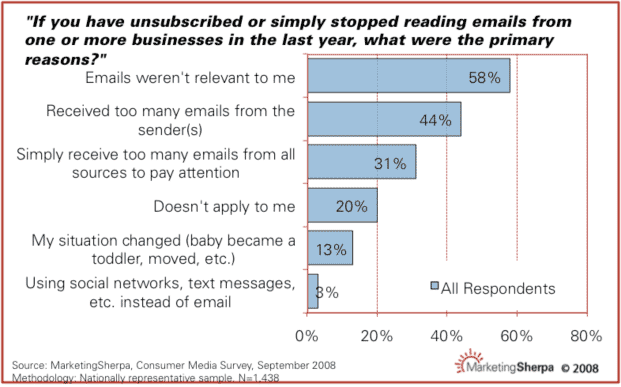Dude, Where’s My Sale?
One of the biggest mistakes a sales person can make is holding on to a lost cause. I call it the “Lenny Syndrome.” We all remember Lenny from ‘Of Mice and Men’ and how he held, hugged and loved that puppy literally to death. Salespeople can do the same thing. A sale goes south, for whatever reason, and the next few weeks are WASTED grasping at the lifeless corpse it has become.
Following this process gets the closure you need to move on, as well as, discovering what you can do to improve yourself and your company’s selling efforts. This combination ALWAYS leads to NEW sales in the future if we apply what we have learned. The results are multiple positives from one negative situation.
You will find times, when a sale is lost; the prospect will give you almost total disclosure as to the reason. But when they don’t it is even more important to find out why. A number of reasons ALWAYS exist that will make the customer reticent about telling you, but there are other times it can be for the most undignified of situations:
- a personal relationship with competitor
- intra-office political flak
- a sleazy side deal
- a sad sack story
- it REALLY WAS about price and they are ashamed because of all their claims about value
- they portrayed themselves to be “bigger fish” than they are
- and more
I am not saying that these are always the circumstances, but you need to keep the “worse angels” perspective in mind. Besides it is more than likely a combination of things that led to the decision and not one lynch pin.
The key to getting an honest answer is to take your prospect off the hook. Remember you have spent a significant amount of time with these people and have probably developed some level of a relationship. They already feel awkward because of the circumstances surrounding the situation so you need to be overtly gracious about the result.
Keep in mind that this information will benefit you 5 times as much as it could ever benefit your prospect so be sure to use that type of ratio in your handling of the prospect.
1) Always place the blame on yourself, examples include:
- “I am sorry that I did not do my job well enough for you.”
- “I am sorry if there was something I did/didn’t do to help in your decision process.”
2) The prospect almost always bends over backward to tell you it was not your fault so now go on the offensive.
- “Could you please tell me what I could to do in the future to improve myself and my company’s service in the future.”
- “I am always looking to improve myself and my company’s service, any opinions or advice you could give me would be a big help.”
3) This is a crucial point. They may offer one or two ideas, but if the necessary sincerity is conveyed, the prospect will teeter on opening up and telling you the whole truth.
- “Thank you so much for the feedback, I know my company and I will benefit from your ideas. Was there anything else I could have done or was there something I missed?”
4) At this point the prospect has either opened up to you or they haven’t. They have told you pretty much all you are going to hear from them at this “sitting” so now it is time to downshift into apology mode again.
- “Thanks you again for all your help. I am so sorry I did not pick up on ____ that’s my fault. (Where appropriate) I hope that this does not preclude us from talking again?”
5) The prospect will probably express relief because you did not push too hard and were so self-deprecating about the results so they are MORE likely to talk to you in the future.
- “That’s great, I will definitely stay in touch. (If you have previously employed the S.I.T. system this will be your tool going forward.)
Now all you have to do is follow-up as promised. The result will be one or a combination of these items:
1) They will eventually tell you the whole story
2) They will become a customer in the future
3) They won’t ever tell you what REALY happened
4) They will say you are wasting your time
Any or all of these results are, at minimum, acceptable. Obviously we would prefer 1 and 2 more than 3 or 4 but the real key is in the self discovery. When we know the reasons, we can move forward and improve ourselves and maybe land this or a similar prospect the next time. We want to close sales but we will NEVER close every sale. Continual development of our sales ability is an active ALL the time process and the only thing that can help us become the sales professionals we aspire to be.
That’s it for today and remember you can either make sales or you can make excuses but you can’t do both!
Standing Out In A Crowd of Competition
Don’t look now, but your market space is getting tougher by the day. Customers are looking for any possible edge in negotiating with vendors while the competition performs pricing acrobatics to grab business. The crowd around your prospects and current customers is growing and it is not going to stop anytime soon.
“Success is about standing out not fitting in,” so says Don Draper from TV’s MadMen. Most people in business are looking for an advantage. They want to stand apart from the competition, but they just don’t know how. Lower pricing is a temporary fix at best until somebody trumps you. Touting more features & benefits is just as fleeting. No, we have to find a new place, somewhere nobody else has looked or even has thought of looking.
ASK & LISTEN
One of the inherent weaknesses of salespeople is the fact that we like to hear ourselves talk. Worse, we like to talk about ourselves and our products. Get over it! ALL customers are tuned into their own radio station WIIFM (What’s In It For Me) everything else is just noise.You have 2 ears and 1 mouth, use in the proper proportion. Ask your customer questions about their business and then LISTEN!
Don’t be content to ask only about what features from your product/service they might be interested in or basic logistic questions that you can get answered at any time. Ask about their company goals, their personal goals, ask how the 2 intersect. Find out how you can make their work day easier. Your purpose here is to build a “snap shot” of what their future COULD look like. I promise you, the deeper level your question, the more you know about the customer, the easier the sale will be. “Felix qui potuit rerum cognoscere causus,” a quote by Georgics Virgil its translation: Happy is he who knows the cause of things.
DIVE INTO THEIR REVENUE STREAM
It’s simple, make yourself responsible for a portion of revenue the customer generates. At the end of the day it’s NEVER about a product or service it is about the impact made on the company’s ability to make money. Find out what makes their business tick then figure out how your product/service helps to keep it ticking. If you do not, all you are doing is providing a service or product that can be provided by ANYBODY ELSE, and many times cheaper. Once you become part of how a company grows and makes mo ney you become an invaluable resource, essentially irreplaceable.
ney you become an invaluable resource, essentially irreplaceable.
HEART AND SOUL
What TRULY motivates a prospect or customer lays deep inside. It is rarely as simple as a feature or benefit. Pricing is always going to matter but pricing can be mitigated when confronted with the achievement of something bigger. What we are tasked to do, as business people who sell, is to FIND the deeper purpose, the bigger achievement, the question is how?
The answer begins with you. Altruism aside, make the accomplishment of a customer’s goals your purpose as well. Customers can sniff out a “salesman” who is selling a product trying to hit quota and they have NO time for those people. But the business person who sells and has a solution to their problem WILL become part of the customer’s bigger success. If you come with that mindset you have the opportunity to achieve great things for your customer and yourself.
These 3 concepts are crucial to your success and by NO means simple. I will be exploring each of them individually in future blogs.
For now, I am out of here, and remember you can either make sales or you can make excuses but you can’t do both….
Choking HAPPENS
Why do athletic teams practice?
Why do even the most advanced athletes practice the basics over and over?
Why do they review game flims/videos before, during and after an athletic contest?
The answer to the above questions is simple. They do so because they want responses to situations to be essentially automatic. If you can remove the ‘what should I do?’ thought and instead allow the best and brightest to simply react using their God given abilities you have the chance to see real success in athletics. It’s not complicated, you don’t practice and the probability you will ‘choke’ in an unfamiliar situation is VERY HIGH.
It is the same in sales. You have to practice your craft to become the best and also so you can recognize situations and know immediately what the solution to them is. If you can eliminate the ‘I wasn’t expecting that’ commentary, which is another way of saying ‘I choked,’ I promise you will see sales increase.
Now I know some sales people will say ‘I get enough practice in front of my customers’. But think about it for a moment, is that where you really want to practice? What happens if what you try doesn’t work? Whoops, you just lost the sale; and that is the minimum that could go wrong.
The repetition of successful performance results in the “Video Game Effect.” We all know the basic concept of video games. Each level of the game has a ‘boss’ you have to defeat. After learning the needed skills and defeating him you move on to the next level, and so on and so on. Through practice and repetition you improve and have more success in the game. The better you get the more you enjoy the game. The world of sales is no different except that the better we get not only do we enjoy our work more but we make MORE MONEY!
There is science to this as well. When confronted with a scenario you have prepared for, the body will produce a neuro-transmitter called Serotonin. Its main job is to induce a calming effect allowing higher level critical thinking to happen at a much quicker pace. The result is better decisions and actions that dictate performance. Once you start to succeed at the task, the body produces Endorphins which creates the euphoric feeling coming after you have performed at a high level or won a contest. Thus, you become conditioned to want the same feeling over and over which propagates continued performance improvement. You might call it “Addiction to Success.”
Sales managers I strongly urge you to start a regimen of sales simulations with your team. You should have each member of the team submit a situation where they either lost the sale or didn’t move the process forward on a monthly basis. Also, build up your “Catalog” through your experience in the field riding with your team. Turn those actual events into simulations and before you know you will have a docket of potential selling scenarios that you can use to help develop your team and reduce the “Choking Happens Syndrome.”
Last thing; always do a post mortem, an evaluation on both live events and the simulations. Make sure your team knows what they did right, what they could do better and what they better not do EVER again. Eliminate the ‘what if’ from you and your team’s vocabulary and watch the sales numbers soar.
3 Warning Signs That Your Sales Candidate Is A DUD!
You can never be 100% sure what is going to cross your desk or walk in the door once you start interviewing. Screening effectively through initial phone calls and resume’ review help but today’s sales people have learned their way around many of the hiring “trap doors” that used to trip them up. So I present to you 3 sure fire RED FLAGS to look out for during the hiring process.
If your candidate:
- Doesn’t know today’s date: If they don’t know this how can you be sure they plan their day. Or worse yet when was the last time they closed a deal? Every daily planner I have ever seen has day and date, so has every CRM/SFA software and the last time I checked every sales contract EVER written has day and date on it as well.
- Can’t recite their top 5 prospects and pertinent details: If they can’t do this who ARE their prospects, or do they even have any? Would you be concerned if your current sales people couldn’t tell you from memory who their top 5 prospects were and their pertinent details?
- They are “yes” people: Good salespeople are not robots. They are strong individual personalities and are rarely ‘joiners’. They ask a ton of questions and don’t readily accept things at face value. These folks tend to be leaders not sheep.
Remember these 3 determiners are to be used in conjunction with a complete Sales Hiring System not as a replacement. Please call email,call or hook up with me via social media if you have any questions. Also, I have written extensively on the subject of Hiring and Assessment for Sales, you can check out my articles right here.
And remember you can either make sales or make excuses but you can’t do both…..
What Happens AFTER They Become Customers?
This is the $1,000,000 question isn’t it? We spent the last 6 articles talking about everything you can do to generate leads using the S.I.T. Lead Generation System. What we haven’t talked about yet is the next step.
To recap, S.I.T. Lead Generation is a customer engagement system. The ultimate purpose is to deliver an ongoing stream of qualified leads to your sales team. What makes it uniquely effective is its ability to also deepen the relationship between suspect/prospect/customer and company/salesperson. It has both cumulative and immediate impact in varying degrees based on strategy and tactics. But the key, at its heart, is building real interpersonal relationships.
No matter what sales methodology you subscribe to, you can never escape the fact that sales is rooted in relationships with real people. Essentially S.I.T. is about becoming uncommonly RELEVANT with our contacts to the point where we transcend “basic selling.”
So for the purpose of today, let’s JUMP over the sales process (we will hit it HARD in subsequent articles I PROMISE) and talk about utilizing S.I.T. with the people that we invested all that time in building relationships, our customers.
The Crime
It is a fact, as plain and real as it is ugly, most sales organizations do a TERRIBLE job staying in touch with customers after the sale. I say ‘sales organizations’ because the mind set starts at the top. More often than not, management is more worried with next month’s sales numbers to the exclusion of the relationships you had to build to get last month’s sales numbers.
The truly criminal thing is we have put in a boatload of time and effort to make this system work, but have simply lost the will to maintain it. Why should we essentially CHOOSE to WASTE the fruit of our labor ? If the system is executed properly we can continue to deepen the relationships and mine our current customers for cross selling, up-selling, referrals, networking, industry experience and many other opportunities benefiting both parties.
The Motive
It is always about time isn’t it? “I don’t have enough time to reach out to them” or “I know I need to call my old customers but I have a proposal to put together.” These aren’t evil motives, they are just WRONG. You have to program into your daily/weekly schedule current customer touches. Think of it like breathing, you don’t do it you DIE!
It is important to note, these touches can’t ONLY happen when the customer is having problems or that is how they will associate you, with a PROBLEM. Just like in when we began using S.I.T. these touches need to be proactive not reactive.
The Means
This is the beauty part. The essential structure is in place. We are already executing a successful S.I.T. system. We know how to schedule touches, what delivery systems to use, how to build relevant content, and more (all of which can be seen in previous FSF posts here, here, here and here). We just need to re-task and tweak for customers instead of suspects/prospects.
The Opportunity
You have a chance to develop a long-term relationship with your customers that can be rewarding in a number of ways. Developing CURRENT relationships as opposed to building NEW relationships is pretty similar. The difference lies in 2 specific areas:
- The Depth: Because of your existing relationship you can go deeper into the what makes the customer tick, finding out even more pertinent facts. They will be much more open and you can really flesh out their profile.
- Risk vs. Reward: The people in your existing relationships come to depend on you. They made a business decision to go with you over a competitor, implicitly trusting you. This is why it is imperative to not only keep up with the current level of customer service, but to improve upon it. You don’t want to put the kibosh on all your hard work because of LAZINESS or worse APATHY. Demonstrate how you value your customers by continuing to deepen and strengthen the relationship with them, I promise it will pay back HUGE DIVIDENDS!
The “Beginning”
Just like life, a customer relationship is a journey, not a destination. There will be ups and downs, twists and turns but when handled correctly it will be the most prosperous journey of all!
All righty folks, that puts the finishing touches on the S.I.T. Lead Generation System. I strongly urge you to re-read and/or bookmark the other posts that define the system in more detail. Also, don’t forget to go to my website for more information and you can always email me if you have any specific questions. Next article we will set off in a new direction, but with the same goals, helping to increase your sales revenue and profit while improving your productivity.
Until then remember, you can either make sales or you can make excuses but you can’t do both…. I am outta of here!
“I Don’t Know Where We’re Going, But We’re Making Great Time!”
One of my favorite euphemisms for ‘man’ not wanting to ask for directions. Unfortunately, it is also true in the sales world. We all want a productive lead generation program, but most of us aren’t willing to invest the time and resources into it.
Lead generation, just like driving to the Grand Canyon, needs to be thoroughly mapped out BEFORE you start the journey. You have to know NOT JUST where you are going, but what is along the way, what does progress look like / can you measure it and you have to be able to answer one of the great questions of our time “WHAT IF?’
Continuing our discussion of S.I.T. Lead Generation, I will be discussing what kind of “map” you need to follow for lead generation, what do the “sign posts” along the way look like and give some samples to use in your sales efforts.
Remember, lead generation is not ONLY for new contacts, but for existing customers as well. We will be exploring how to Stay In Touch with ALL contacts in a way that will demonstrate your dedication to customer service and differentiation from your competition.
The Road Ahead
There is a psychological concept called Self Efficacy. Even when something seems impossible, it is the strength of our belief that makes success possible. The absence of this belief guarantees failure. A strong belief in the mission fuels our ability to focus, put forth effort, and persist. Believing allows us to see the goal (continue in the face of daunting adversity) and break the goal down into more manageable objectives (one evolution at a time). If the evolution is a cold call, it can be broken down into even smaller objectives such as asking good questions. Believing allows us to seek out strategies to accomplish the objectives. Then, when the call is done, move on to the next evolution. Thinking too much about what happened and what is about to happen will wear you down. Live in the moment and take it one step at a time.
Self Efficacy is EXACTLY why we have to keep in mind all reasons this process is SO IMPORTANT.
We want
- to DECREASE time in the sales cycle and INCREASE closing percentage.
- to remove the “Ugh Factor” from our phone calls and “warm up” our cold calling.
- to INCREASE our average sales size.
- to receive that “magic call” from contacts saying they received our information and THEY want to talk to us (yes this will happen with this system).
- to have a REAL reason to call our contact and NOT be stuck saying “I just wanted to…”
- to be a THOUGHT LEADER! Somebody our client turns to when they have questions because we know they won’t be in the buying cycle all the time. Sometimes they just need some info and we want to be the providers of that information.
5 Steps for S.I.T. Scheduling
1) Classifying your suspects, prospects and customers is critical. Not all contacts are equal and you can’t treat them as equal. You want to personalize your touches as much as possible and the variables you must take into account for that are:
- newly found or currently existing in database
- industry/industries that you sell into
- positions titles and responsibilities by position
- buying cycle
- size of business (revenue or employee)
- Active and Dormant Needs (see description in post at link)
All of these factors are crucial because they will all have their own built in time frames and predilections and they ALL must be taken into account.
2) After you have classified all contacts you must perform what I call ‘Opportunity Research’ using LTLR (see description in post at link). You have to know everything you can about all these factors and how they effect your contacts. Using ‘Opportunity Research’, many times you will further stratify your contacts leading to even MORE personalization and the possibility of deepening the relationship, ALL GOOD THINGS!
‘Opportunity Research’ will also be different depending on the above variables. You will invest more time in research for some opportunities opposed to others, it only makes sense to prioritize your time, you only have so much of it. A word of caution though for the previous statement, don’t get lazy just because an account “looks smallish.” Run out “ALL your ground balls” and do your research you never know what may be lurking behind door number 2!
3) We have classified and researched our contacts now we can put them into a schedule of touches (click here to see descriptions of touches). Newly found and existing will always be handled differently (at least until the newly found are brought into the cycle). Click this link to see an example S.I.T. Schedule. Customers also need to be touched differently. They should see the ULTIMATE in customization. You should know these folks inside and out, thus they have the most individually personalized touch system possible. Even if your product/service is a one time purchase and you have NO chance of ever selling to that customer again KEEP THEM IN THE TOUCH PROCESS. It is customer service 101 and you never know when they will have a reference for you.
4) Monitor, Measure and Modify: Always know what is going out, to who and when. You don’t want to be caught flat footed if a customer calls to thank you and you don’t have the foggiest why he is doing it. Always know the ROI for your efforts. This knowledge will help you to spend money on the RIGHT areas, not just any area. Always improve your efforts whether it is the timing, the content or delivery. If you are getting a high rate of call ins ask why? If you are not getting a high enough click through rate ask why? ALWAYS LOOK TO IMPROVE YOUR RESULTS!
5) Don’t STOP EVER! Once you start this process you can never stop it. Aristotle once said “Nature abhors a vacuum.” If you are providing consistent, relevant content, your contacts will begin to look forward to it. If you stop for any length of time, I PROMISE YOU, your contacts will find someone else to provide them content and that person’s name is COMPETITOR!
That was a lot of info for today. Let’s take some time to process it and give me a call or shoot me an email if you have any questions. Next time in the Forum we wrap up S.I.T. Lead Generation and lay the ground work for your next step on the road to sales success!
Until then remember, you can either make sales or you can make excuses but you can’t do both!
I Just Wanted To….
I hate those four words! And you know what, so do your customers. Those words (and other variants) form the basis of the worst that lead generation and staying in touch with contacts has to offer. Whether it is on the phone or in person here are a few of the worst cringe inducing lead in’s
- I just wanted to say hi
- I just wanted to follow up because you said you would have an answer
- I just wanted to call because it is the (beginning/end of month, been a few weeks)
- I just wanted to check and see if you were in the market yet
- I just wanted to stop in and say hi, haven’t heard from you in a while
All of these examples rate WAY high on ”The UGH Factor” scale. You know ‘UGH’, the sound you hear from a customer when you “pop in” for a quick hello or “catch them” on the phone to check status. We HAVE to stay in touch with our suspects, prospects and customers, our business lives depend on it, but the question is how do we do that in a high value added way?
In The Beginning
Think back to virtually any good relationship you have, the last thing you wanted is that person DREAD you coming over or calling. Our challenge is to make our business relationships WANT to take our call or look forward to us stopping in unannounced. That is where the S.I.T. Nurture Prospecting System comes in.
First, we need to embrace the BIG 3: Relevance, Consistency, Timing and incorporate them into our entire touch strategy. Next we need to make sure we Personalize and Monetize everything that they see from us (please see previous post “Do You REALLY Know Your Customers?” for detailed explanation of both concepts).Once we have addressed these critical aspects, then we can start thinking about the touch process itself.
The Song of S.I.T.
Song is such a great metaphor for your S.I.T. System. Let’s look at the pieces that make up a song:
- Introductions help establish the key, tempo and mood of a song. You’ll know you’ve found a strong introduction when everyone recognizes the song after the first few seconds.
- Verses contains the story line and help answer the journalistic questions about who, what, when, where and why. They tend to be more or less the same from one verse to the next and yet they help move the listener along in an unfolding story.
- Bridges are connecting pieces or transitions from one part of a song to another.
- Refrains/Choruses usually deliver the essential messages, the payoff or the knock-out punch.
- Hooks are simply put the most memorable, distinguishable bit of the song.
- Breaks are a little relief from the song so far.
- Codas (or tags) are the special endings for songs.
Your S.I.T. elements are not that different
- Social Media Touches: No matter what you think of it, social media is a reality and is only getting bigger and more influential. Make sure that YOU and YOUR company have a positive image and are frequent contributors to the major sites of Linked-In, Facebook, You Tube and Twitter.
- Initial Contact Touches: Could be a letter, could be a phone call but you need to start the process strong, get in the door and get recognized. The great thing is, when done right, lightning can strike. Somebody could be in the market RIGHT now and because you called you can start them in the sales cycle immediately. Even better is when you get calls IN from your letter. I have customers that average a 20% call in rate from their initial mail touches. 1 Caveat: Never initialize contact with an email it has to be more personal to make a statement.
- Knowledge Touches: These could take the shape of articles, webinars/seminars in their industry, white papers or even ideas of websites your contact would find useful, but are NOT about you or your product. When chosen well, they paint the picture of of how you can help them through your selection of topical information. You can either mail or email these.
- Impact Touches: These are ‘creative’ ways to stay top of mind, such as a packet of seeds with a note that says “we help your business grow” or a simulated X-ray of an arm/leg on transparency stock and a note that says “is your manufacturing process broken?” I will even buy a good business book, Good to Great for example, and
 drop it off with a note that says “lots of great info for you.” These touches break you away from the norm and are fun to do as well. Primarily, these are delivered in person UNLESS there is value in mailing.
drop it off with a note that says “lots of great info for you.” These touches break you away from the norm and are fun to do as well. Primarily, these are delivered in person UNLESS there is value in mailing. - Bridge Touches: Sometimes you want to mix it up with a simple letter or email consisting of 1 idea that will prove useful. You can’t swing for the fences all the time, keep it fresh (and yes I know this one is actually named after an element of song.)
- Drop Off Touches: A combination of all of the above, the only difference is in the delivery. If you have an appointment in a business park make sure you bring along enough Drop Offs for the rest of the park. Make sure you L.T.L.R. (please click on read description in previous post) and get the info to the right people.
- Holiday Touches: Always remember you have ‘built in’ reasons to touch contacts, they’re called holidays. Don’t forget cards and letters on the big holidays like Christmas, St. Patrick’s Day and 4th of July, but also mix in the some of the less celebrated as well for example Arbor Day, Bosses Day and the 1st Day of Spring.
- Event Touches: Industry/topic specific webinars and seminars, that you or your company put on, should be part of the mix as well. Just remember these need to be INFORMATIONAL and not BLATANT COMMERCIALS. You should also look into events in your market space and submitting speaking topics for you to present.
- Status Touches: You didn’t think this was magic and you never had to pick up the phone again did you? The only difference is now, because of your efforts, you have a REASON TO CALL other that to say “I just wanted to check in.”
Now, by utilizing these touches, you have plenty of content to discuss during a Status Touch. There doesn’t have to be the ham-handed “I just wanted to.” Ask how they like the different pieces, what did they like most etc. Trust me, they know why you are calling, but you took GREAT strides to contrast yourself from the regular cold caller/drive-by caller. And it is the effort that will make all the difference in the world.
The implementation of these S.I.T. elements will help you to control the narrative of your company, influence buying behavior, guide your contacts to information that will impact their business, keep you top of mind in a very positive way and most importantly create the framework of a relationship that will based on mutual respect and not “I just wanted to……”
There you have it, an introduction to the universe of touch pieces for your S.I.T Lead Generation System. Our next post will lay out a sample schedule with some specific examples and we will talk about how to integrate into any existing lead generation efforts.
Until next time remember, you can either make sales or you can make excuses but you can’t do both!
Do You REALLY Know Your Customers?
I am reading the book Switch: How to Change When Change is Hard. The authors, Dan & Chip Heath pose a great question/analogy. There is 1 particular choice that people across our country make everyday that COMPLETELY alters everything in their life. They volunteer to change EVERYTHING about their present mode of living including, but not limited to:
- fracturing their sleep into 3-4 hour chunks of time
- how they spend their free time
- what they do with any spare money
- eating habits and much, much more
That 1 choice is parenthood. Why would people volunteer for such massive change? Anybody who has children already knows the answer to the question.
Now think about this in terms of your customers:
- Why would they make a change in their current situation?
- What would compel them to make a decision to move out of their comfort zone.
- What could possibly make them spend hours researching multiple options then spend the next few weeks to months of their lives meeting with, at minimum, 3 salespeople and telling their story over and over?
- All this just to take a chance and make a decision that could ruin their career with their company.
That is OUR magic question. THE question we must answer to A) educate our suspects/prospects/customers and B) sell them our products and services. The answer is, of course, to know and understand our potential customers by establishing REAL relationships.
So how do we begin a REAL relationship with people that we don’t know, but need to know to be a success? Lead generation of course, but how does a real relationship with potential customers start? It should be no surprise that it begins and ends in hard work, this is sales after all, but let me be much more specific.
L.T.L.R.
Learn To Love Research! (you all know I love my acronyms). I don’t care if it is online, at the library or experientially, you must research your potential market. You need to know what affects them on a daily basis, what situations (regulatory, legal, market based etc.) could change their business for the positive AND negative. You need to know the titles of your contacts and what those titles actually do. You need to know what their location geography means to their business. In short, you need to be an expert on your potential customers all BEFORE you send out 1 ‘touch’ from 1 lead generation campaign and this is just the beginning of the process.
Before They Are Customers
Before they are customers they are either suspects or prospects. I teach my clients to characterize status based on ACTIVE and DORMANT needs. Simply put, if a potential customer does not recognize they have a need, then DORMANT would be the classification and they’re what I call suspects. If recognition is present, they will have an ACTIVE need and they could be prospects. 1 caveat, this is the simplest description of suspects and prospects. There is more complexity to these definitions but for the sake of today’s discussion it is more than sufficient.
The BIG 3
Once your research is completed you need to develop your Touch Matrix. This consists of all the different type of touches you will be using to nurture the relationships with your clients. Some of the components to consider are letters, emails, social media, whitepapers, articles, 3rd party case studies, webinars and more.
The design, type and, most importantly, content of touches, that will be used, are dependent on the recently completed research AND the BIG 3:
- Relevancy
- Consistency
- Timing
All your content MUST be RELEVANT to your suspect/prospect/customer, their organization or best of all BOTH. It could be industry specific, job specific or personal specific, but it can’t be about YOU or your company. Remember relevance is like beauty, it is always in the eye of the beholder. So forget ‘special’ price lists, coupons or product announcements.
Once you start your S.I.T. Lead Generation System you can’t stop. You need to be CONSISTENT with your touches. If you are doing a good job getting your folks impactful content they will become addicted to it. If, for whatever reason, you stop ‘touching’ your folks they will reach out to find OTHER (see competition) sources for the same information. All your work thus far will be shot to pieces with the interesting side effect of degrading your reputation for reliability/customer service for good measure.
“TIMING is everything.” I am sure you have heard that before. It is every bit as true with your S.I.T. System. You need to know when your folks like to receive information and what events coincide with a touch from you. This is the art of appearing to be ‘coincidental’ on purpose. Mix up the releases of your info based on your research/experience and always keep your ears -eyes open for trigger events and potential tweaks to the system. The goal is being the person who is always on the tip of their tongue when they are talking to their associates or their superiors.
Personalize and Monetize
2 crucial mistakes that many people make when constructing their first S.I.T. System, is forgetting to PERSONALIZE and MONETIZE. Each piece has to be constructed from design to content to delivery system the way that will make the biggest IMPACT with individual PERSON who is our suspect/prospect/customer. It doesn’t matter what you like, it matters what they like. Don’t substitute something that you think “looks cool” if it contradicts all the research, experience and time you have invested.
“This is show business not show friends” said the character ‘Bob Sugar’ in Jerry Maguire. We must remember that everytime we touch our suspect/prospect/customers with needs to ring the ‘money bell.’ The people we contact don’t want fluff for fluff’s sake. They want something that will help them do their job better, something that will get them noticed by the boss or even improve a system at their facility. Always err on the side of getting people information that can be MONETIZED for real value at their job.
All righty then, that’s all for today. Next time we will continue to lay out the S.I.T Lead Generation System giving you more ideas to grow your business….
In the meantime, remember you can either make sales or make excuses but you can’t do both!
I am outta of here…..
The Birth of a SALE
8:06pm St. Patrick’s Day, my wife gave birth to our second child, Emily Elizabeth Kolencik. Thank you we think she is beautiful too.
This wondrous event got me thinking about when a sale really begins. Does it start when we research their company? Does it start when we call the suspect for the first time? Does it start when we do a presentation for the prospect? Or does it start with the first objection?
Cut it any way you want but the sale starts when the PROSPECT decides they have a problem. Not until that moment of “conception” do we have even the POTENTIAL for a sale. The trick is how do we get to be a part of the moment? Just because the prospect has decided they have a problem doesn’t mean they will automatically come looking for us. So how do we insert ourselves into the decision making process so the solution to their problem “looks” like our solution?
S.I.T. Lead Generation System
Back in my previous post Cold Call Once, Then Never Again... I started to lay out the basic concept for the S.I.T. System. Today we need to explain the philosophy behind the system. If you don’t know the why or buy into the why it doesn’t matter what the system is made of.
S.I.T. Lead Generation is a customer engagement system. It’s ultimate purpose is to deliver an ongoing stream of qualified leads to your sales team. What makes it uniquely effective is its ability to also deepen the relationship between suspect/prospect/customer and the company/salesperson. It has both cumulative and immediate impact in varying degrees based on strategy and tactics. But the key, at its heart, is building real interpersonal relationships. No matter what sales methodology you subscribe to, you can never escape the fact that sales is rooted in relationships with real people.
95%-5% Rule
Based on writings, research and books from as far back as Adam Smith, the father of modern economics, we have the 95% – 5% Rule. At any given time, only 5% of your potential market universe is actually looking for what you may be selling. This means they have made a conscious decision to look for a solution and guess what, it may NOT be your solution. When a prospect is actively pinging for a solution they are generally hit by an average of 7 potential vendors. All things being equal, 14.2% is the average chance you have of landing that prospect, the math is not good. But what of the 95%? The average number of potential vendors that stay in touch with them before they decide they need a solution is…. 1, just 1, I know it is unbelievable.
Research by Inc. Magazine stated in a survey 96%, of over 1000 sales people from a large range of industries, said that customer service is what differentiates them from their closest competitors. It further stated that 91%, of owners, decision makers and purchasing agents said the customer service they experience is BEST WHEN IN THE SELLING CYCLE… WOW! All of sudden those horror stories about salespeople abandoning their customers after a sale became true. The reality of this is if we do not find a way to reach out to the 95% we are forever doomed to be 1 out of 7 competitors and have a 14.2% chance on every potential sale. And if those are the facts, on the ground, what are we to do about it?
Staying In Touch
I know what you are going to say here “I do stay in touch and I always ask what new projects they are working on.” There is also the pop-in sales call replete with the old line “I was just in the neighborhood and thought I would check in.” These examples, my friends, are not a sales calls but BOOTY CALLS. Here’s some other examples: “our customers get regular emails and letters telling them about all our new products and specials” that true believers is advertising by BILL-BOARD. And perhaps my favorite is “we get them baseball tickets every year” do I have to tell you what that categorizes you as? You see in all these efforts it is the approach, method and mindset that is the problem.
We have to look at this through the prospect/customer prism, but we can take cues from OUR own behavior Do you like a salesperson calling when you are not in the market for something? What do you do with emails and letters that are blatant advertising? And that is how you need to look at S.I.T. We need to know what is relevant and important to our suspect/prospect/customer, information with personal value and monetary value. THAT is what they want to see.
- What is important in their industry?
- What can effect their own personal growth?
- What can help them do their job better?
- What is important to them in their personal life?
The answer to these questions, by the way, is NEVER “product information from our company. The bottom line is this, if we fail to take an interest in our customer’s business and personal life what reason do they have to take an interest in ours?
There is an old saying “Treat strangers like friends, friends like family and family like you can’t do without them, why, because you can’t!” This variation, that I coined, is the mind set that needs to rule your sales universe. “Treat suspects like prospects, prospects like customers and customers like you can’t do without them, why, because you can’t!”
All righty then, that’s all for today. Next time we will talk about the Big 3 of S.I.T. and 2 factors that you ignore at your own peril!
And remember you can either make sales or you can make excuses but you can’t do both!
I’m outta of here….
Cold Call Once, Then Never Again…
First and foremost, let me state for the record WE WILL ALWAYS HAVE TO PROACTIVELY CALL SUSPECTS, PROSPECTS and CUSTOMERS, this activity is not going out of style any time soon. We will always have to COLD CALL. It is time, however, we changed the way we attack this very important and integral activity.
The perception of cold calling has morphed into the reality of cold calling; Calling blind with little or no plan or reason as to why we are calling. We can no longer afford to…
- take a list and start calling with no upfront understanding of who we are calling
- make this a center piece of our lead generation “strategy”.
- tell sales reps “good job” for this type of effort.
What is necessary is a wholesale re-invention of lead generation or something I teach and implement called The S.I.T. (Stay In Touch) Nurture Prospecting System. Today we will be talking about 1 aspect of the system, New Contact Touching.
Why do we need to re-invent cold calling?
- It takes too much effort/time and yields too little results.
- It weakens the customer perception of us and our organization.
- It drains the caller and can de-motivate even a solid sales professional.
- We have monthly quotas and quarterly/yearly goals.
So what is the solution? We need to treat our New Contact Touch Process like a full on marketing campaign. The biggest dose of time we need to invest needs to be upfront.
Step 1) Change our mindset. Sales is not about relationships. Sales IS relationships and a slim few relationships start because of an unwelcome intrusion. Which is EXACTLY how most executives/decision makers view an old fashioned cold call. We need to set the table of the relationship by learning about our potential “love connection”. We must pay the price of admission by showing our suspect/prospect/customer that we care enough to invest time researching them.
Step 2) Pick 50 to 100 companies to research. Base your search in whatever parameter/demographic is most important, some examples include:
- market fit
- contact type
- seasonal
- event promotion
Step 3) Discover some information about everybody on your list that is either highly relevant or timely. If you can’t find out something about a company or individual set them aside until you can and add another name you want to target. Some examples include:
- Sending an article where they/their company was mentioned
- Sending an article that they may benefit from because of its content and/or relation to their industry
- Sending a seminar/webinar notification because of its content and/or relation to their industry
- Sending a congratulatory note based on something you uncovered in your research
There are of course more, but all 4 of these examples will show the suspect/prospect/customer that you have “paid the price of admission.”
Once you have done this, take the list that you couldn’t find information on and “cold call” them. Use that time cold calling to build your suspect/prospect profile. Use that cold call as the first touch of your S.I.T. Nurture Prospecting System. This call is is only the initial touch, after qualification or if you don’t get the right person, info gather and find out who is the right person. Start your system based on relevant content for this person and organization. Always remember, sales is like lightening, it can strike anywhere, any time, but the odds of getting hit by it are pretty high. Go into each cold call with the agenda of learning and let the relationship build from there. Then never “cold call” the account again!
In our upcoming posts we will be discussing EVERYTHING included in a S.I.T. System
- modes or vehicles that will carry your highly relevant/timely “touches”
- basic scheduling ideas
- social media’s place in the system
- event planning (webinars/seminars)
- tradeshows and their proper execution and much more…..
And remember you can either make sales or make excuses but you can’t do both!
Archives
- May 2018
- November 2016
- June 2016
- April 2016
- March 2016
- February 2016
- January 2016
- February 2012
- January 2012
- December 2011
- October 2011
- August 2011
- July 2011
- June 2011
- May 2011
- April 2011
- March 2011
- February 2011
- July 2009
- June 2009
- May 2009
- August 2008
- June 2008
- May 2008
- April 2008
Categories
- A-Players
- Best Practice
- Change
- Cold Call
- Communication Skills
- Continual Development
- Critique Session
- Customer
- D.I.G.
- Drive
- Firing
- Guts
- Handling criticism
- Hiring and Assessment
- Hiring Dashboard
- Human Resources
- Intelligence
- interview questions
- Interviewing
- interviewing sales superstars
- Lead Generation
- Leads
- Motivation
- Naturally Curious
- New Contact Touches
- Position Contracts
- Proposals That Sell
- Prospects
- Reference Checks
- S.I.T. Blitz
- S.I.T. Nurture Prospecting System
- S.I.T. Touch
- Sales 3.0
- Sales Blitz
- Sales Management
- Sales Superstars
- Simulations
- Skill Sets
- Staffing
- Suspect/Prospect/ Customer Dynamic
- Suspects
- Talent and Traits
- Termination
- Uncategorized








